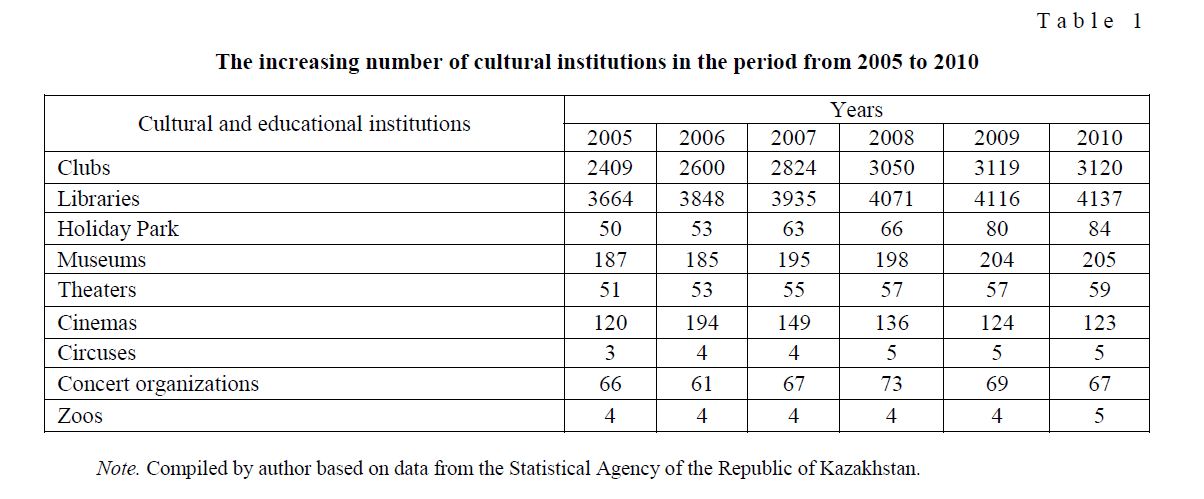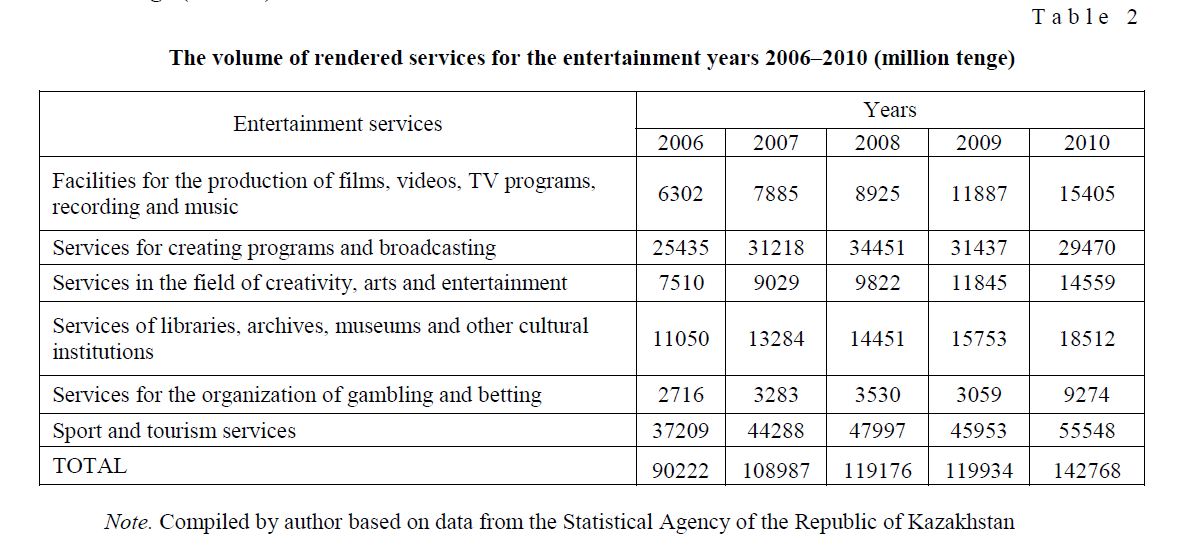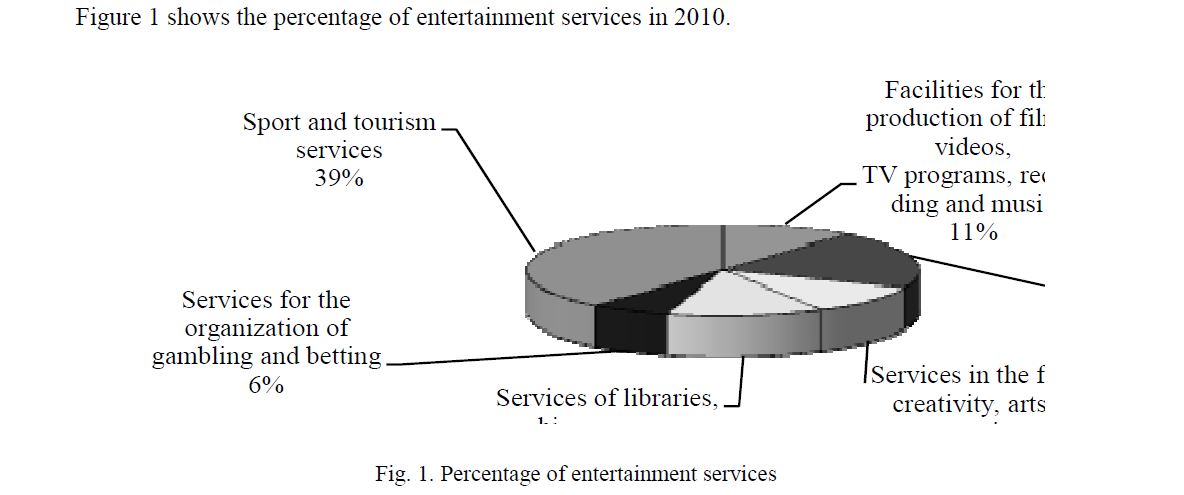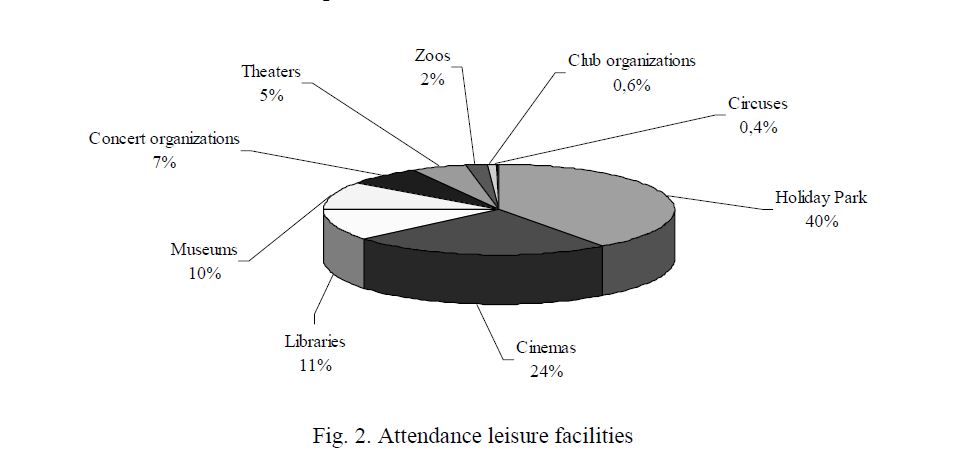The entertainment industry is one of the youngest branches of the social and cultural spheres. Economic science that studies the industry is just beginning to develop. The composition and structure of the industry are not precisely defined.
Fun, meet people’s spiritual needs, assesses your own personality, its role in analyzing the extent of different social systems. The processes are carried out as entertainment in the natural and the artificial environment.
In statistics, there is no criterion for the selection of the entertainment industry companies. This is due mainly to two reasons. First of all, organizational and economic features of the entertainment business are difficult to define. There are a variety of enterprises, creating conditions for the entertainment. They are scattered in many areas, not related to the traditional classification of the entertainment. In some cases the creation of conditions for the entertainment — it is the main activity of the company (disco as an independent company), in others — support (games store as part of the economy hotel), third — a side (dancing in the library).
The second reason is that there are no required activity classifications. Entertainment has not received a particular place among many other activities.
There is a varied practical experience in determining the boundaries of the entertainment industry. In world practice, such as:
- company whose main activities are related human needs in entertainment: circuses, zoos, amusement, games, amusement parks, mobile camps, ;
- entertainment businesses: theaters, cinemas, art studio, philharmonic orchestras, ensembles, music halls, art and music groups;
- sports facilities: skating rinks, arenas, halls, clubs, water parks, scuba diving centers;
- the establishments, where introduction to cultural values is accompanied by entertainment: museums, exhibitions, clubs, internet centers;
- companies providing entertainment in the form of an auxiliary or ancillary activities: hotels, tourism businesses, recreation areas, historic sites (for example, the famous Gothic cathedral can be used for entertainment purposes as a lookout of the city);
- industrial enterprises producing the equipment and inventory, recreational goods (TVs, radios, recorders, cameras, ).
Thus, in practice, entertainment industry includes not only typical recreational facilities, but also some of the material production enterprise. Theoretical clarification of the boundaries of the entertainment industry is an unsolved problem.
The entertainment industry is aimed at creating conditions for entertainment, i.e. set of phenomena, which are curled on the availability of the process fun. The origin of the need for entertainment motivates people to action — finding entertainment.
The dynamics of the emotional needs is accompanied by a change in the background. A person seeking an object of entertainment and feels anxiety. After finding it, feels a sense of joy. The emotional focus of the entertainment industry is the creation of new personal and social needs in the existing premises.
The entertainment industry is responsible for:
- education;
- forming an optimistic mood;
- education;
- rest;
- development of human
Currently, the entertainment industry is as an independent, relatively isolated element of the economic system, involving considerable material, financial and human resources. In this regard, the entertainment companies are characterized by specific technologies, management systems, the result of the activities, and organization of staff.
The main function of the industry is creating moods, education and personal development. In fulfilling these functions, the entertainment industry involved in the reproduction of labor, human capital increases. In addition, like other sectors of the economy, it performs the production, the revenue function and the function of employment.
The principal characteristics of the process fun include:
- the voluntary choice of entertainment;
- an unlimited list of entertainment;
- a previously prepared individual to consume entertainment;
- frequent change of amusement;
- combining entertainment with other
Among the most important tasks of modern entertainment industry include the following.
- Based on the important role of entertainment in the formation of the human person, in the study of patterns of need and trends in the entertainment Creation of adequate models of the entertainment industry will contribute to more effective management of relevant processes and improve the effectiveness of social policies.
- The entertainment industry in some developed countries turned into a lucrative area of capital investment with short payback period. Development of a competitive network of companies provides a person a huge selection of specific forms of
- Modern life is characterized by an accelerated pace and constant stress. Increased risk of diseases of the nervous system. Escape from reality and relaxation are important landmarks of human
- The demand for entertainment, especially the extent and functioning of enterprises depends on the size and ways of spending free
- An important factor in shaping the entertainment media is the income of the Need to identify and assess the factors determining the efficiency of the entertainment industry.
- Managing the development of the entertainment industry should be based on full
The practice of creating special conditions for the organization of the processes of entertainment has led to a sufficiently powerful entertainment industry. The latter, in its present form, was formed by the end of XX century [1].
The beginning of the third millennium is characterized by intensive development of the global entertainment market. Business based on the organization and conduct of entertainment, bringing huge profits and accumulating billions of dollars.
Demand for entertainment is characterized by a number of features. The scale of demand depends on the presence and amount of free time, socio-demographic characteristics and income. Factors participating in entertainment — sex, age, level of culture, education, occupation, especially education and facilities and incentives. The needs for entertainment associated with the human life cycle, as well as an annual, monthly, weekly and daily cycle. Entertainment is usually combined with other activities: recreation, plus entertainment, sport, plus entertainment, education plus entertainment, etc.
Companies are organized by the state of the entertainment industry, business and nonprofit organizations. The property of the state — national and local (city) parks, stadiums, several sports facilities, beaches, etc. It is possible vacation without pay or only partially paid holiday-makers. Some national parks have become the symbols of states. In the U.S.A, there are 367 national parks. Franklin D.Roosevelt said about them: «There is nothing more American than our national parks». In Canada there are 29 large national parks. The most famous among them is the Buffalo Park.
The commercial sector offers a wide range of services paid for vacationers: amusement facilities, private clubs, theme parks, etc. Among the objects of this type, the most famous in the world — parks and attractions Orlando (USA): World Animal Kingdom, Walt Disney World, Cypress Gardens, occupying 200 acres of land, wheeled steamer, Shaw water skiing, ballet on ice, the Sculpture Garden of the plants rides.
Nonprofit sector of the entertainment industry provides facilities for recreation, not pursuing the goal of profit. In international practice in this sector operate a variety of organizations:
- clubs of ethnocultural orientation (Chinese, Indian, Ukrainian, );
- military organization (aero clubs, parachute clubs, shooting clubs, amateur clubs, );
- student organizations (clubs dance, amateur song, );
- service industry companies, responsible for sports and entertainment recreation workers;
- organizations developing entertainment programs for special population groups — the mentally ill, mentally retarded, people with disabilities (Special Olympics for disabled, deaf clubs, );
- religious
Entertainment market of the Republic of Kazakhstan is changing from the beginning of our country as an independent state. The collapse of the Soviet Union led to disintegration of the leisure industry in the country. Many cinemas and sports facilities have closed, which currently tend to represent shopping centers. For much of the population, of all pre-existing forms of spending free time, except for a hobby, had only to television. Began with the 1999 economic recovery has led to an increase in revenue. At the beginning of the population released more and more money and this led to the fact that different kinds of entertainment for the people have become more affordable. In the country was rapidly developing new industry — the entertainment industry, which at this stage of development of our country is one of the most dynamic sectors of the economy.
Statistics confirms this: the average monthly nominal wage per employee in Kazakhstan in August 2011 was 93,106 tenge, an increase compared to the same month last year to 15.2 % in real terms by 5.7 %. And about 5–7 % of their wages average citizen of Kazakhstan is spending on entertainment [2].
The key factors are not only the wages of Kazakhstan, but also the growth of the country's population and its needs. For example, the number of theaters in Kazakhstan has increased from 51 in 2005 to 59 in 2010, the museums — from 187 to 205 clubs with 2409 to 3120, libraries 3664 to 4137, parks, entertainment and recreation, from 50 to 84. Only the number of zoos, circuses and concert organizations, virtually unchanged (Table 1). Number of organizations engaged in film screenings, increased sharply in 2006, then gradually began to decrease [3].
The increasing number of cultural institutions in the period from 2005 to 2010
T a b l e 1

Note. Compiled by author based on data from the Statistical Agency of the Republic of Kazakhstan.
As can be seen from Table 1, the most common in the territory of our republic was building new cultural establishments of club type, which in six years increased by 711 facilities. Visit a zoo or circus only in major cities of Kazakhstan.
During the period from 2006 to 2010 in Kazakhstan entertainment services were provided in the amount of 581,087 million tenge. Thus, only in 2010, sports facilities and recreation services have reached 55 548 million tenge (Table 2).
The volume of rendered services for the entertainment years 2006–2010 (million tenge)
T a b l e 2

Note. Compiled by author based on data from the Statistical Agency of the Republic of Kazakhstan
Regarding the volume of services in Kazakhstan, the share of entertainment has 6.1 %. Of these, 2.2 % are sports facilities and recreation services, 0.7 % — is a service of libraries, archives, museums and other cultural institutions, 0.6 % represent a service in the field of creativity, art and entertainment services the organization of gambling and betting services 0.4 %; services for the production of film, video and TV programs, recording and music make up 0.6 %; services for the creation of programs and broadcasting — 1.1 %.
Figure 1 shows the percentage of entertainment services in 2010.

Fig. 1. Percentage of entertainment services
If we consider in the context of entertainment services, we see that the sports facilities and recreation services are key in Kazakhstan.
Affecting the distribution of entertainment services by regions of the Republic of Kazakhstan, there is the undisputed leader stands Almaty region, and the city of Almaty. Almaty region gives way to the South — Kazakhstan region only for the provision of services for creating and broadcasting programs. But the minimum amount of available entertainment services have the following areas: Zhambyl (services for the production of films, videos, TV programs, recording and music facilities in the area of creative arts and entertainment), Western — Kazakhstan (services for the creation of programs and broadcasting services the organization of gambling and betting services, sports facilities and recreation services), Mangistau (services of libraries, archives, museums and other cultural institutions). It is also not developed the scope of service for the organization of gambling and betting services in Aktobe and Karaganda regions.
From two thousandth years in the field of culture were achieved certain results. Each year, the number of existing museums on the territory of Kazakhstan, on average increased by 17 %. Along with the increasing level of education there is a demand for bibliographic information. This led to an increase in library users by an average of 2.5 percent compared with last year, which in turn gave rise to the need for technical support libraries (almost 50 % of computerized). In 2010 the number of readers was the order of 4.5 million people, 1.5 million of them — the children. Every year an increasing number of books in the national language, which in 2010 accounted for 28.5 % of the total number of books.
The most famous libraries are based in major cities of Kazakhstan: Almaty, Astana, Aktobe, Atyrau, Taraz, Ust-Kamenogorsk, Uralsk, Karaganda, Kostanai, Kyzylorda, Semei, Pavlodar and Petropavlovsk [4].
In the 205 museums in Kazakhstan is 2.5 million pieces. Number of visitors to museums at the end of 2010 was 4.3 million.
Most of Kazakhstan's famous theaters are located in Almaty. This State Academic Opera and Ballet named after Abay, Kazakh State Academic Drama Theatre named after M.Auezov, Republican Korean Theater of Musical Comedy and many others. The second place was divided by the number of theaters, Astana, Karaganda and Shymkent. On the third place are located the cities of Kazakhstan, as Aktobe, Kostanai, Pavlodar, Semipalatinsk, and Uralsk [5].
These figures indicate that most of the theaters located only in major cities of Kazakhstan, with a population exceeding 100,000 people. Accordingly, the smaller the town, the lower the theaters. Statistics show that in the 2010 theatrical performances attended by about two million people. Total audience for the year was 11,755 performances demonstrated.
Construction of the circuses in small towns in Kazakhstan — it is not cost-effective, and conversely, if the population of the city is about to reach a million and has already achieved, there is bound to come Circus. In Almaty there are already two of the circus, in Karaganda and Astana — one by one, and, more recently, new circus opened in Shymkent. In 2010, the circus of our Republic was held 364 performances. The number of visitors was 128,000 people.
Zoos in Kazakhstan at exactly the same as, and circuses. The reason for the lack of a large number of zoological objects as they become unprofitable due to the small towns. They are located on a map of Kazakhstan a little differently. The triple-known zoos make Almaty, Karaganda, and Shymkent. That's zoos in North Kazakhstan and East Kazakhstan regions appeared to show the fauna of the regions of the country. Number of visitors of zoos is equal to 746 thousand people a year.
More than 7129 revenues amounted to KZT of organizations that featured movies. Of these, 5555.5 million tenge (77.9 %) at the enterprises of private ownership. Last year, the screenings were performed in 87 movie theaters, as well as with the use of 364 mobile and stationary film projectors. There have been
365.4 thousands of cinema, which was attended by about 10 million people. The share of adult education was 76.3 %. Kazakh films watched 830.8 thousand people, the Russian — 1896.1 thousand people and foreign — 7352.4 thousand people. 18 organizations — the filmmakers have created over 2010 films and 144 short films, 134 of them — national films [6].
In Kazakhstan, at the end of 2010 there were 67 concert organizations. For the year were held 6401 concerts. For comparison, in 2008 were organized 7464 concerts, and the number of organizations was 73 units. Statistical data suggest that consumer demand for different types of live events is reduced. In 2010, the concert came 2.9 million people, including at the Philharmonic — 2.1 million, the pop — 821,000 people. Most philharmonic concerts held in the Karaganda region and pop — in Kostanai. The largest number of concert organizations in Almaty.
The most visited sites in the entertainment industry in 2010 were entertainment and leisure parks, 40 % of the population, 24 % visit the cinema of the population of Kazakhstan. The least visited are zoos, circuses, and club organization (Figure 2).
The most popular among Kazakhs enjoy entertainment and leisure parks. This is where almost every citizen of our republic, from the smallest to adult who spends his free time and those parks are market leaders in entertainment services. In 84 amusement parks of the country over the last year was visited by million Among the recreational facilities in amusement parks and recreation (2155 units), the number of gaming machines is 1197 objects, and the number of attractions in the sum equals 670. Housed amusement parks in the country are extremely uneven. Most of all leisure facilities located in the two capitals of our country: Astana and Almaty. Areas such as Kyzylorda, Akmola, Mangistau and the West Kazakhstan are deficient in amusement parks and recreation.

Fig. 2. Attendance leisure facilities
In Kazakhstan, there are 3120 cultural establishments of club type. The number of amateur art groups — 13 161, the number of participants in the aggregate amounts to 181,580 people. The leader in number of establishments of club type is Akmola, an outsider — Mangistau.
Thus, all of the above data suggest that the clear leader in the spectrum and quantity of services provided by the entertainment is the city of Almaty. Following the leader — the capital of Astana, Karaganda, which not so long ago, ranked second in terms of population, and Shymkent, the rapid growth that started recently. In general, Southern Kazakhstan, in a given period of time, provides the greatest number of entertainment services, followed by North and Central. East and West Kazakhstan are located at the bottom. For example, in western Kazakhstan are no circuses and zoos.
With regard to the preferences of the population, most Kazakhs like to spend their free time at amusement parks and recreation. The next position among leisure facilities occupies cinemas. Third place belongs to the libraries, the fourth — the museums, and the fifth — concert organizations. The last thing people visit zoos and circuses, which is primarily due to their small number in the territory of our republic.
In general, it can be argued that the domestic market for entertainment is almost formed. However, almost all the segments have not yet reached its peak, or the master is not occupied niches. Indicative comparison of network entertainment companies in Europe and the U.S. show that even in quantitative terms is significant backlog of Kazakhstan — entertainment centers, motels, campgrounds, hotels, car rental items to museums, parks, and other objects of the entertainment industry in Kazakhstan is ten times smaller. At the initial stage are such recreational facilities as health clubs, golf clubs, theme parks, movie theaters and cinemas circuit for motorists, coffee club type. Many times smaller the number of water parks, swimming pools, tennis courts and centers of winter sports. Underdeveloped market of services for the full family entertainment. Today, families are offered other, simpler forms of entertainment. Nevertheless, the entertainment industry is beginning to gain momentum due to an increase purchasing power and the accumulated experience of managers in the management of recreational facilities infrastructure.
References
- http://www.coolreferat.com/Индустрия_развлечений
- http://news.gazeta.kz/art.asp? aid=350270
- Tourism in Kazakhstan 2005–2009 / Statistical Yearbook / Astana,
- http://kv.ucoz.kz/news/razvivaja_kulturu_sovremennogo _kazakhstana/2011–08–28–8244
- http://ru.encyclopedia.kz/wiki/ Театры_Казахстана
- http://profinance.kz/2011/04/15/bolee-7129-mln-tenge-dood-organizaci-osuestvli.html